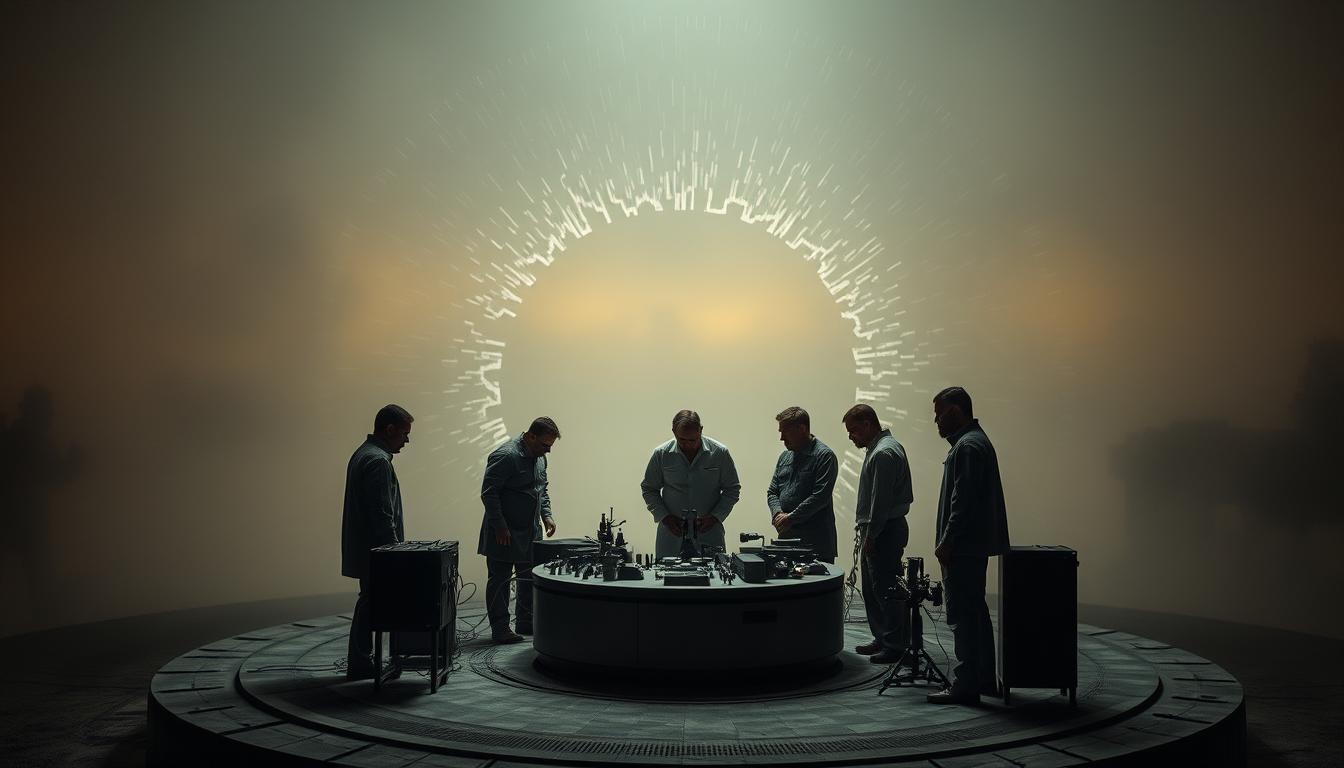During the Cold War, the government explored unconventional methods to gain an edge in the global arms race. One of the most intriguing initiatives was Project Stargate, a classified program that delved into the realm of remote viewing. For 23 years, this initiative received $20 million in funding from the Defense Intelligence Agency, sparking curiosity and debate.
The program aimed to harness psychic abilities for intelligence gathering, a concept that seemed straight out of science fiction. The CIA even studied Soviet research in this field, fearing a “psychic arms race.” Public interest peaked in 2009 when Derren Brown conducted a TV experiment on remote viewing, captivating 1.8 million viewers.
This article explores the techniques used in Project Stargate, the groundbreaking research by Dr. Edwin May, and the controversial NSA leak involving Pat Price. Was it a groundbreaking discovery or a costly experiment? Let’s dive in.
Key Takeaways
- Project Stargate was a 23-year classified program funded by the Defense Intelligence Agency.
- It focused on using psychic abilities for intelligence gathering during the Cold War.
- The CIA studied Soviet psychic research, fearing a “psychic arms race.”
- Derren Brown’s 2009 TV experiment brought remote viewing into the public eye.
- Key figures include Dr. Edwin May and Pat Price, whose work remains controversial.
Introduction to Project Stargate
In the 1970s, a secretive initiative began exploring the boundaries of human perception. Known as Project Stargate, this program was funded by the Defense Intelligence Agency and aimed to harness unconventional methods for intelligence gathering. It emerged during the Cold War, driven by fears that the Soviet Union was advancing in paranormal research.
The program had three primary goals: to gather intelligence, develop psychic countermeasures, and understand the mechanisms behind these abilities. Over its 23-year operation, it employed more than 12 individuals with unique skills, including Angela Ford, who successfully located fugitives using remote viewing.

One notable case occurred in 1989 when a remote viewer pinpointed the location of Charles Jordan in Wyoming. This success highlighted the program’s potential, but it also faced skepticism. Project Stargate was a dual-purpose initiative, designed to spy on enemies while protecting against psychic espionage.
Collaboration was key to its operations. The program worked closely with SRI International, the CIA, and the intelligence agency to conduct groundbreaking experiments. Despite its achievements, Project Stargate was shut down in 1995 due to political pressure and the so-called “giggle factor”—the perception that such research was too unconventional to be taken seriously.
| Key Aspect | Details |
|---|---|
| Operational Period | 1972-1995 |
| Primary Goals | Intelligence gathering, psychic countermeasures, understanding mechanisms |
| Notable Case | 1989 location of Charles Jordan |
| Collaborators | SRI International, CIA, Defense Intelligence Agency |
| Shutdown Reason | Political pressure and “giggle factor” |
The History of Psychic Spies
The Cold War era saw an unusual focus on unconventional intelligence methods. Both the U.S. and the Soviet Union explored the paranormal to gain an edge. This led to a series of groundbreaking experiments that pushed the boundaries of human perception.
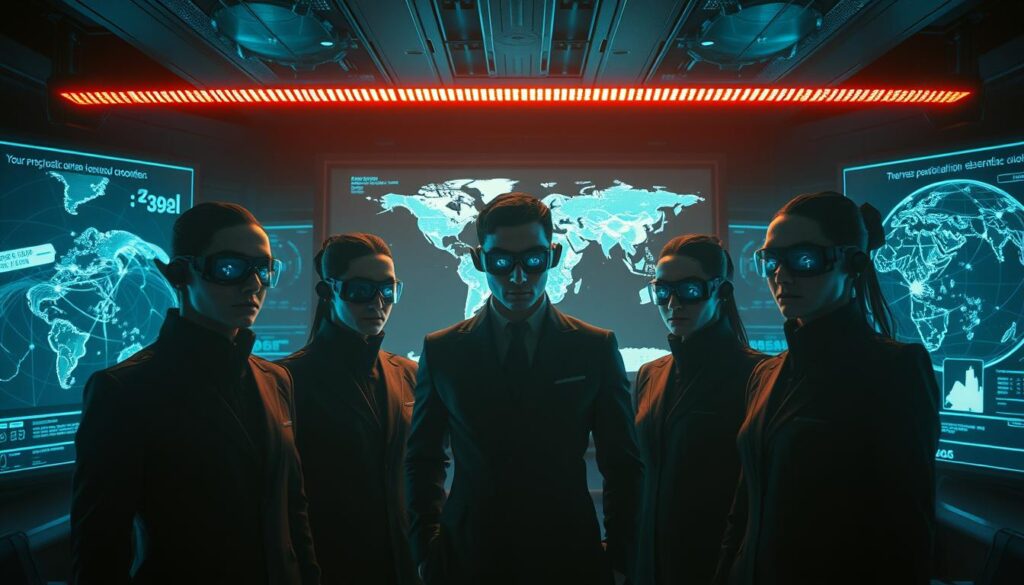
The Cold War and the Psychic Arms Race
In the 1960s, the U.S. Defense Intelligence Agency grew concerned about Soviet advancements in psychic research. Footage of Nina Kulagina, a Soviet woman allegedly demonstrating telekinesis, fueled fears of a “psychic arms race.” This prompted the U.S. to invest in similar studies to counter potential threats.
By the 1970s, the U.S. was actively testing individuals like Uri Geller, who claimed to possess extraordinary abilities. These tests aimed to verify the feasibility of using psychic methods for intelligence gathering. The fear of falling behind in this unconventional field drove much of the research during these years.
Early Experiments in Remote Viewing
One of the most notable experiments was conducted by SRI International in 1975. Under the guidance of Hal Puthoff, researchers used magnetometers to study the effects of human consciousness on physical objects. This laid the groundwork for remote viewing, a technique that allowed individuals to access classified sites without physical presence.
Remote viewers like Pat Price demonstrated remarkable accuracy in locating targets. For instance, in 1981, Joe McMoneagle successfully identified the location of kidnapped General James Dozier. However, the 42-day hostage case highlighted the operational limitations of these methods, showing that they were not always reliable.
| Key Event | Details |
|---|---|
| Nina Kulagina’s Telekinesis | Soviet experiments in the 1960s |
| Uri Geller’s CIA Testing | 1973 verification of psychic claims |
| SRI’s Magnetometer Experiments | 1975 study on human consciousness |
| Joe McMoneagle’s Remote Viewing | 1981 location of General Dozier |
| 42-Day Hostage Case | Demonstrated operational limitations |
How Remote Viewing Works
Remote viewing, a technique shrouded in mystery, has fascinated researchers for decades. It involves accessing distant targets through mental focus, bypassing physical barriers. This process relies on heightened perception and unique skills to gather information about locations or objects without being present.

The Science Behind Remote Viewing
At its core, remote viewing combines science and intuition. Researchers at SRI International developed protocols using geographical coordinates as targets. These coordinates helped viewers focus their mental energy on specific locations, often with surprising accuracy.
One of the most intriguing aspects is the “eight-martini results” terminology. This phrase describes outcomes so shocking they’d require eight martinis to process. Such results highlight the potential of remote viewing, even if they remain rare.
Key Techniques Used by Psychic Spies
Several techniques were employed to enhance remote viewing. Sensory deprivation tanks were used to minimize distractions and improve focus. This method allowed viewers to tap into their subconscious more effectively.
Another technique, known as “mushing,” was described by Pat Price. It involved accessing sealed documents or hidden information through mental imagery. This method showcased the potential of remote viewing in intelligence gathering.
Training viewers was not without challenges. Once their perception was heightened, there was no “off switch.” This made it difficult for them to disconnect from their heightened awareness, even in everyday life.
| Technique | Description |
|---|---|
| Coordinate-Based Targeting | Using geographical coordinates to focus on specific locations |
| Sensory Deprivation Tanks | Minimizing distractions to enhance mental focus |
| Mushing | Accessing sealed documents through mental imagery |
| Eight-Martini Results | Shocking outcomes that defy conventional understanding |
For those interested in developing similar skills, learning how to develop clairvoyance skills can be a great starting point. Remote viewing remains a fascinating blend of science and the unknown, offering a glimpse into the untapped potential of the human mind.
Key Figures in Project Stargate
Project Stargate’s success hinged on the contributions of key individuals who pushed the boundaries of human perception. These figures brought unique skills and perspectives to the program, shaping its legacy in unconventional intelligence gathering.
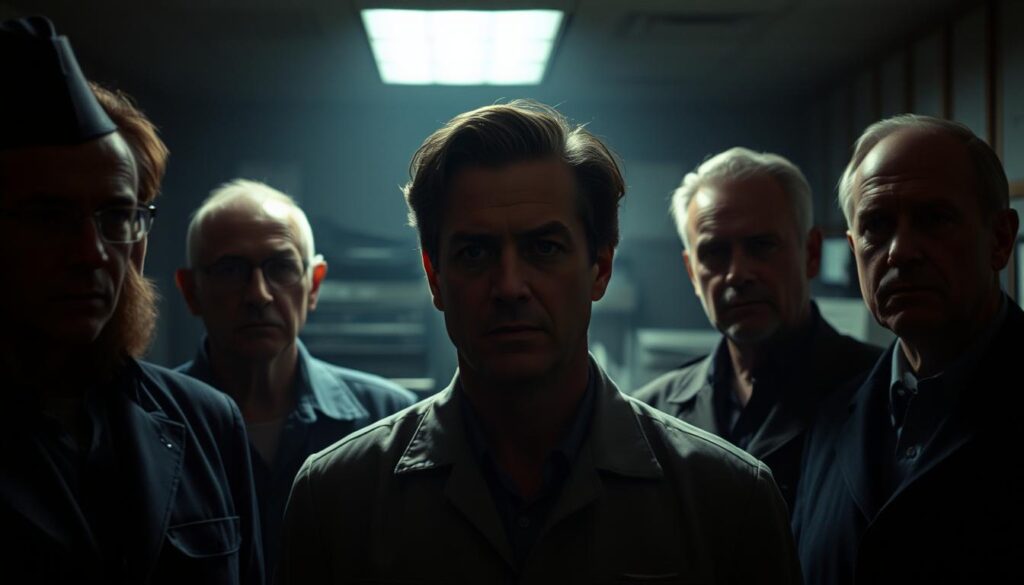
Dr. Edwin May: The Scientist Behind the Program
Dr. Edwin May served as the head of Project Stargate for 23 years. With a PhD in nuclear physics, he approached psi phenomena with a materialist mindset. His leadership ensured the program maintained scientific rigor despite its unconventional focus.
May’s colleagues often praised his ability to bridge the gap between science and the unknown. He believed that understanding these phenomena could revolutionize intelligence gathering, even if the results were sometimes unpredictable.
Notable Psychic Spies and Their Contributions
Pat Price, a former police officer, made headlines in the 1970s for revealing details about the NSA’s Sugar Grove facility. His ability to access classified information without physical presence showcased the potential of remote viewing.
Angela Ford, another key person, achieved an 89% accuracy rate in locating missing individuals. She once said, “I was good at finding people,” highlighting her natural talent for this unique skill.
Joe McMoneagle, a decorated military officer, earned honors for his service in the program. His work demonstrated the practical applications of remote viewing in real-world scenarios. Others, like Uri Geller, had mixed results during CIA testing, but their contributions added valuable insights to the program’s research.
Major Experiments and Findings
Project Stargate’s experiments pushed the boundaries of human perception, yielding fascinating results. These studies aimed to uncover the potential of remote viewing in intelligence gathering. From identifying hidden files to locating fugitives, the program’s findings remain a topic of intrigue.
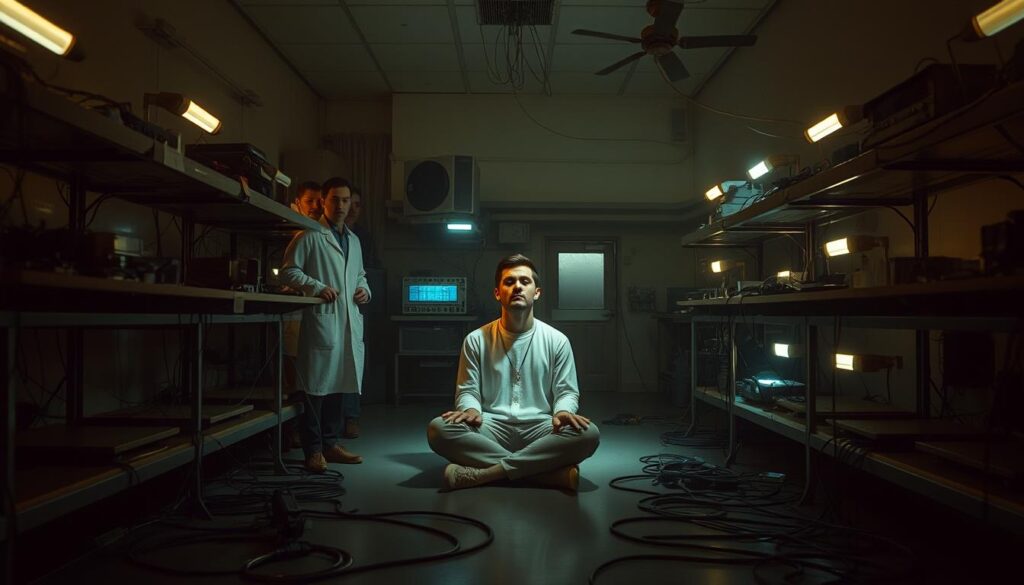
The Pat Price Experiment
One of the most remarkable experiments involved Pat Price, a former police officer. In 1973, he successfully identified file names stored in an NSA safe without any physical access. This breakthrough demonstrated the potential of remote viewing in accessing classified information.
The CIA launched an internal leak investigation following Price’s success. They were baffled by how he could describe the contents of a secure facility with such accuracy. This case remains one of the most compelling examples of remote viewing’s capabilities.
Other Significant Remote Viewing Sessions
In 1989, a remote viewer used geographic coordinates to locate a fugitive in Wyoming. This operation showcased the practical applications of the technique in real-world scenarios. The viewer’s accuracy highlighted the program’s potential, even if it wasn’t always consistent.
Another notable session involved Joe McMoneagle, who provided a verified description of Soviet submarine pens. His work demonstrated how remote viewing could offer valuable insights into enemy facilities.
In the 1990s, precognition tests revealed that participants’ pupils dilated before being shown emotional pictures. This finding suggested that the human mind might have the ability to anticipate future events, adding another layer to the program’s research.
Derren Brown’s subliminal circle experiment further validated the concept of remote viewing. His work showed that individuals could subconsciously process information without direct exposure. Additionally, a 1995 CBS test featuring Erin Moriarty demonstrated precognitive responses, further supporting the program’s findings.
Finally, a museum-based experiment revealed a 35% accuracy rate among participants, compared to just 10% in the control group. These results underscored the potential of remote viewing, even if it remains a controversial topic.
The Role of the U.S. Government
Behind the scenes, the U.S. government quietly supported one of the most controversial programs of the Cold War. Project Stargate’s existence relied heavily on the involvement of key agencies, including the CIA and the defense intelligence agency. Over 23 years, these organizations provided funding and resources to explore unconventional methods of intelligence gathering.
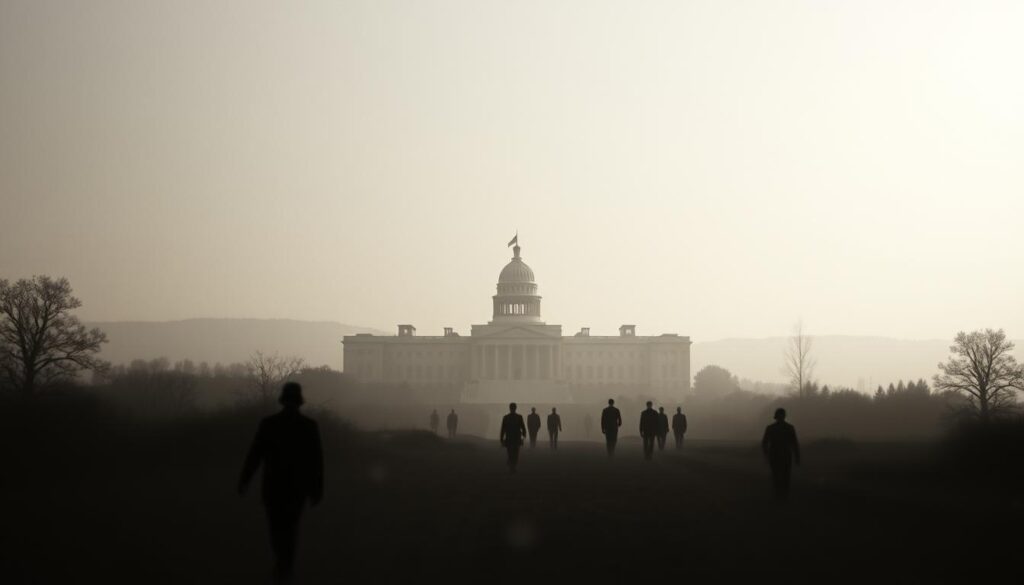
CIA and Defense Intelligence Agency Involvement
The CIA and the defense intelligence agency were instrumental in shaping Project Stargate. The CIA studied Soviet research in paranormal phenomena, fearing a potential “psychic arms race.” Meanwhile, the intelligence agency funded the program, allocating $20 million over its operational period.
Senator William Cohen played a crucial role in protecting the program from political scrutiny. His support ensured that Project Stargate continued despite growing skepticism. However, not all officials were publicly supportive. Senator John Glenn, for instance, privately backed the initiative but maintained a public distance.
Funding and Political Challenges
Funding for Project Stargate came primarily from the defense intelligence agency, with contributions from other military branches. The program’s budget was allocated to various experiments, including remote viewing and precognition tests. Despite its achievements, the program faced significant political challenges.
In 1995, a GAO report criticized the program’s lack of tangible results, leading to its termination. The so-called “sheep vs goats” paradigm also influenced its downfall. This concept divided researchers into believers (“sheep”) and skeptics (“goats”), creating internal friction and undermining scientific acceptance.
Even after its closure, Project Stargate’s legacy endures. In a 2018 CBS interview, journalist Annie Jacobsen revealed that the Department of Defense still shows interest in similar research. This ongoing fascination highlights the program’s lasting impact on modern intelligence methods.
Legacy of Project Stargate
The influence of Project Stargate continues to shape modern intelligence and scientific research. Decades after its closure, the techniques and findings from this groundbreaking program are still being explored in new and innovative ways. From military applications to private sector advancements, its legacy is far-reaching.
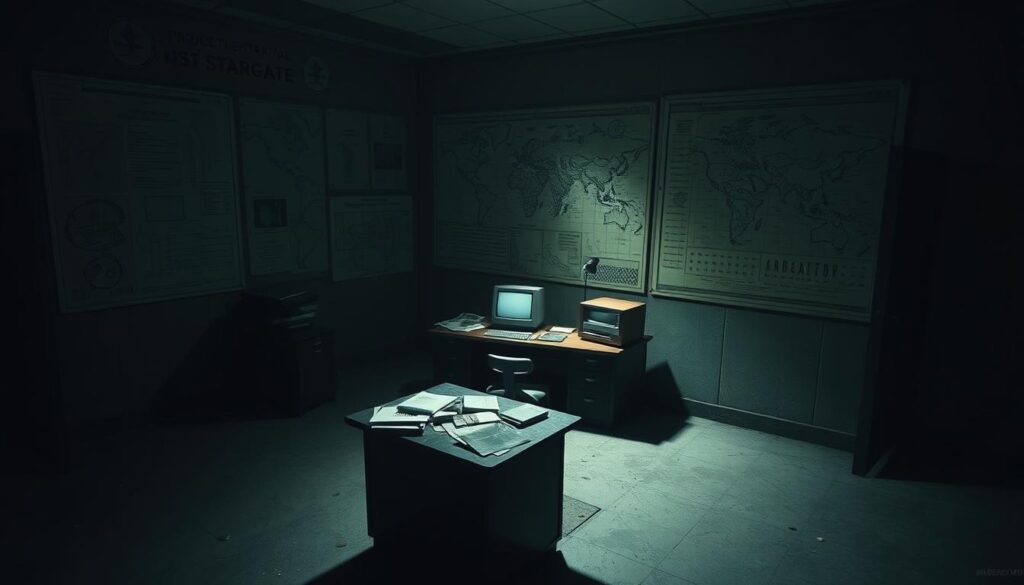
Impact on Modern Espionage
Project Stargate’s methods have influenced modern espionage techniques. The U.S. military’s Enhanced Human Performance initiative, launched in 2018, builds on the program’s research. This initiative explores ways to enhance soldiers’ cognitive abilities, drawing from remote viewing and other unconventional methods.
Remote viewing has also inspired advancements in AI pattern recognition. By studying how humans process information intuitively, researchers are developing algorithms that mimic these abilities. This crossover between human perception and technology is shaping the future of intelligence gathering.
Ongoing Research in Psychic Phenomena
Research into psychic phenomena continues today. Dean Radin, a prominent scientist, is conducting experiments on precognition. His work aims to understand how the human mind might anticipate future events, a concept explored during Project Stargate.
The Institute of Noetic Sciences (IONS) is another key player. They study mass consciousness effects, investigating how collective human thought can influence the physical world. These studies echo the program’s focus on the untapped potential of the mind.
In 2017, the CIA declassified documents related to Project Stargate, reigniting public interest. These files provide valuable insights into the program’s experiments and their implications for modern science.
| Application | Details |
|---|---|
| Military Initiatives | Enhanced Human Performance program (2018) |
| AI Development | Pattern recognition inspired by remote viewing |
| Scientific Research | Dean Radin’s precognition experiments |
| Private Sector | Applications in archaeology and geology |
| Declassified Documents | CIA’s 2017 release of Project Stargate files |
Project Stargate’s legacy extends beyond government programs. Private sectors, such as archaeology and geology, are adopting remote viewing techniques to locate hidden sites and resources. This demonstrates the versatility of the methods developed during the program.
For those curious about the broader implications of these phenomena, understanding the psychic definition can provide deeper insights. Project Stargate’s work continues to inspire curiosity and innovation, proving that its impact is far from over.
Conclusion
The story of Project Stargate blends science, secrecy, and speculation. This program achieved notable successes, such as locating missing individuals and accessing classified information. However, its limitations and the ethical concerns surrounding psychic intelligence gathering remain debated.
Today, the government and researchers continue to explore the mechanisms behind psi phenomena. Modern applications, like crisis negotiation and missing persons cases, show the future potential of these techniques. Yet, critical thinking is essential when evaluating paranormal claims versus evidence.
Project Stargate’s legacy reminds us of the fine line between innovation and skepticism. As we look ahead, its lessons encourage a balanced approach to exploring the unknown.

